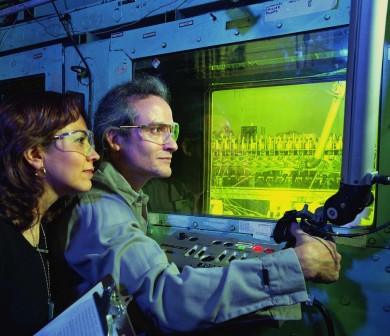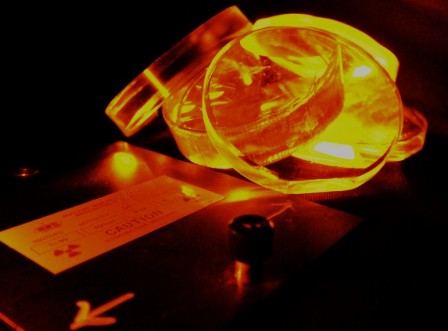South Carolina To Get Collection Of Nuclear Material
At the Nuclear Security Summit, President Obama appealed to countries to get rid of the nuclear weapons material which they received from the US under the 1950s Atoms for Peace program.
(Dispersing nuclear weapons material, albeit for peaceful purposes, is now thought to be dangerous.)
President Obama proved that collection efforts are progressing. Ukraine announced, Monday, that it would rid itself of its nuclear weapons material by the next nuclear summit in 2012. It will send its highly enriched uranium (HEU) to Russia to process it into low enriched uranium – for fuel not nuclear weapons.
Other nation’s made similar pronouncements Tuesday. Mexico, Canada and Chile plan to give their nuclear weapons-grade material to the US.
While officials calculate the amount of nuclear material countries are getting rid of, some are trying to figure out where it’s going to go.
Although the plan is unclear, the US would likely store the weapons-grade uranium at a spent fuel site in South Carolina. The Savannah River Site is the only site available for this highly radioactive and dangerous substance.
Edwin Lyman, Senior Scientist with the Union of Concerned Scientists, said, “It doesn’t add much to the waste burden but does help non-proliferation.”
The US could decide against storage, and instead blend it with natural, unprocessed uranium to be used as fuel for nuclear power.
But that only takes care of one type of material used for nuclear weapons. The other is plutonium. It is much more difficult and expensive to secure and re-purpose than highly enriched uranium.
In opening remarks at Tuesday morning‘s plenary session, President Obama described the seriousness of plutonium.
“Just the smallest amount of plutonium — about the size of an apple — could kill and injure hundreds of thousands of innocent people,” Obama said. “Terrorist networks such as al Qaeda have tried to acquire the material for a nuclear weapon, and if they ever succeeded, they would surely use it,” he said.
It could be blended with highly radioactive waste to make it too toxic to use and in need of storage. To the dismay of environmentalists, the US has neglected that approach. Instead, it converts plutonium into nuclear power by blending it with uranium, also known as MOX fuel. That, too, would take place in South Carolina.
But, unlike highly enriched uranium, the US has yet to receive any guarantee from nations to hand over their plutonium.
Lyman said, “This is probably the biggest problem with the summit is that it won’t make many significant strides in solving the plutonium stockpiles in countries that are our allies.”
The United Kingdom, France and Japan are the largest producers. Lyman says they are protective of their supply and are reluctant to give it up, because they have coveted access to the resource and they reprocess it for nuclear fuel.
“That’s the message the summit doesn’t want to get involved in, because you would get into the debate whether the practice of reprocessing makes sense or not,” Lyman said.
The US has little-to-no civilian plutonium, but a large stockpile for military purposes. Under the START agreement with Russia, both countries would begin to reduce their weapons grade plutonium.
You can follow Leigh Ann’s Washington coverage on Twitter.
To hear an audio version of this story, visit FSRN.
Related Articles














You must be logged in to post a comment Login